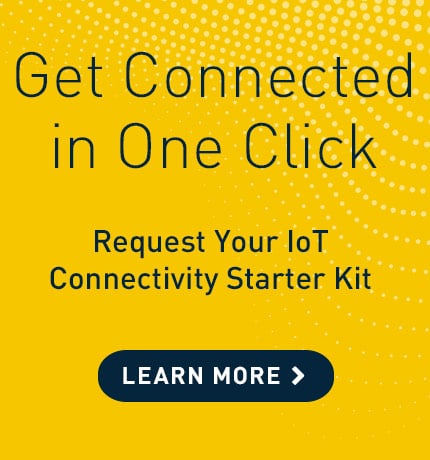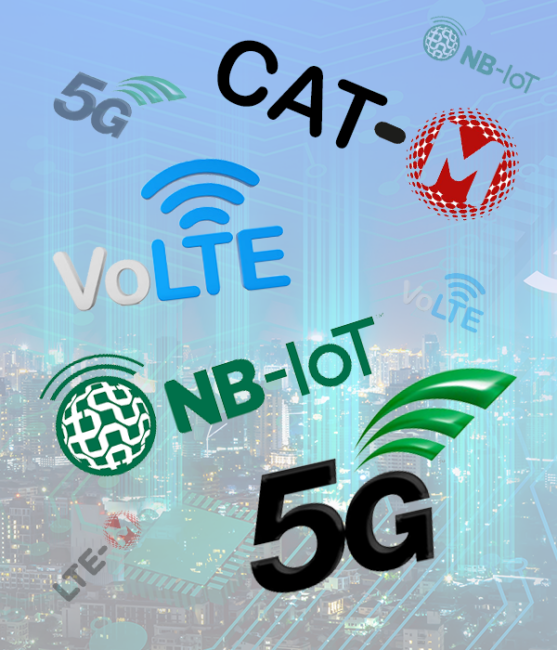
As mobile technologies develop and Internet of Things (IoT) deployments soar, new IoT connectivity terminology is appearing at a dizzying rate. For manufacturers and small- or medium-sized providers, understanding these IoT connectivity buzzwords is essential for success.
The technologies you choose today are vital to the longevity of your IoT solutions. Selecting the wrong one based on misunderstanding could bring your applications — and your market opportunity — to a premature end.
Knowing these terms will help you stay on top of IoT trends and choose a smart solution compatible with target markets worldwide. Foremost, it will ensure you ask the right questions on the requests for information and quotation (RFIs and RFQs) to select services and vendors.
Here’s a short list of IoT buzzwords that all providers and developers need to know.
IoT Connectivity Buzzwords for Leading Mobile Technologies
You can’t make sound IoT connectivity decisions without understanding the shorthand for leading mobile technologies, which include:

Category M (Cat M)
Cat M supports cost-effective cellular low-power wide-area (LPWA) capabilities and focuses on mobile applications. It has an extended coverage range and low power consumption. Cat M is ideal for devices that require low-data transmission under full mobility, including:
- Telematics trackers
- Personal and pet trackers
- Portable point-of-sale (POS) devices
- Cold-chain cargo monitors
It’s also sometimes referred to as LTE-M.
Narrowband IoT (NB-IoT)
NB-IoT refers to a cellular LPWA technology that supports low-cost IoT devices and services. It’s excellent for static, battery-operated devices and indoor applications where signal loss can be an issue, such as:
- Parking garage stall occupied sensors
- Warehouse pallet tags
- Smart gas and water meters
- Underground facility monitoring
Voice over Long-Term Evolution (VoLTE)
VoLTE was developed to transition cellular voice calling from 2G and 3G circuit switch standards to LTE’s packet-data architecture. With 2G and 3G sunsets, solution providers must apply VoLTE to IoT applications. VoLTE ensures voice-based IoT systems like home alarms and elevators deliver the best user experience.
VoLTE supports broader coverage worldwide, including IoT use cases like emergency call systems (i.e., eCall) in vehicles and remote premises access control.
5G
The successor to 3G and 4G networks, 5G is the latest global wireless network standard. 5G uses millimeter wave (mmWave) and sub-6 GHz frequencies and will reach 20 Gbps speeds by 3GPP’s Release 18 rollout. 5G is creating new opportunities across myriad verticals, such as connected health care and telematics.
This standard offers:
- Ultrahigh data speeds
- Extremely low latency
- Improved availability
- Higher network capacity and device density per unit area of coverage
With its superior performance in speed, latency and reliability, 5G enables various IoT applications, including:
- High-definition and high-framerate security and surveillance cameras
- Autonomous robotics
- Industry 4.0
Another use case for 5G is in public transportation. Icomera is a Swedish company that provides connectivity solutions for buses and trains. One of its solutions, the Icomera X5, is the world’s first 5G router certified for rail.
This router uses the company’s SureWAN™ network aggregation protocol and our 5G IoT modules to enable fast, reliable connectivity. With 5G, the Icomera X5 broke a rail industry record for throughput. Read the case study to learn more.
High-density deployments of transactional devices require support for special protocols as these devices are not always “awake.” Mobile networks enable these deployments with cellular LPWA standards, which support applications in:
- Smart utilities
- Smart city lighting
- Disposable tracking devices for shipping
Buzzwords for IoT Hardware Essentials
It’s also important to understand terms and acronyms for essential IoT hardware, such as:
Embedded Subscriber Identity Module (eSIM)
Traditional SIM cards have been the standard to identify mobile devices on a specific mobile network to grant them network access, including where and how. Most changes to their service configuration involve installing new SIM cards or manually switching them on thousands of devices. The need to physically change these SIMs makes them expensive and impractical for large-scale or multiregion IoT deployments.
To solve this issue, the eSIM standard was devised as programmable SIM cards embedded directly into devices. A physical SIM has an integrated circuit on a removable universal integrated circuit card (UICC).
An eSIM consists of additional software layers over and above the software in regular SIMs. This software is installed onto an embedded UICC chip permanently attached to a device. It is tamper-resistant, more secure and can be updated remotely.
Embedded Universal Integrated Circuit Card (eUICC)
eUICC is the standard that makes the eSIM so versatile, as it allows remote SIM provisioning with network profiles. The eUICC platform enables mobile network connectivity providers to send their SIM profiles to eSIM devices remotely. It minimizes manual processes and enhances connectivity management of IoT deployments at scale.
eUICC gives organizations additional flexibility to load multiple profiles. For example, manufacturers can develop a device intended for use in various geographies. Then, they can load or switch a profile to work with the local connectivity provider when the device is installed or moved.
Understanding IoT Connectivity Buzzwords and Unlocking Opportunities
Understanding the latest trends and terminology is critical for smart decisions around IoT solutions. We are here to help you navigate the barrage of industry buzzwords so that you can develop innovative IoT offerings.
We support your connectivity needs by helping you understand the most advanced terms and what they mean for your deployment and future growth plans.
With over 22 years of deep industry knowledge and hands-on experience, we can help you with integrated security and standards-based solutions to:
- Accelerate development
- Minimize risks
- Control costs
To learn more, speak with our IoT connectivity experts and request an IoT connectivity starter kit.
Request a Starter Kit
